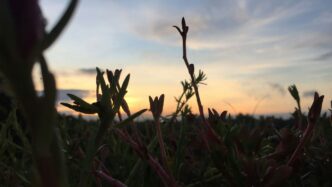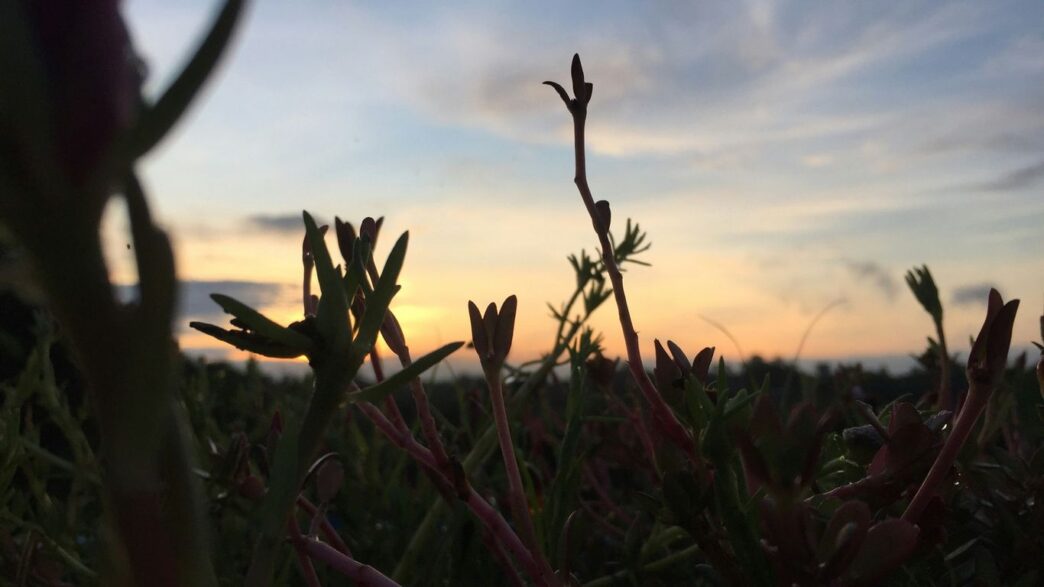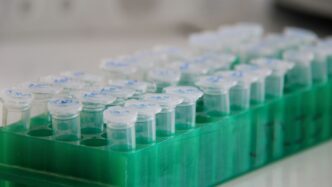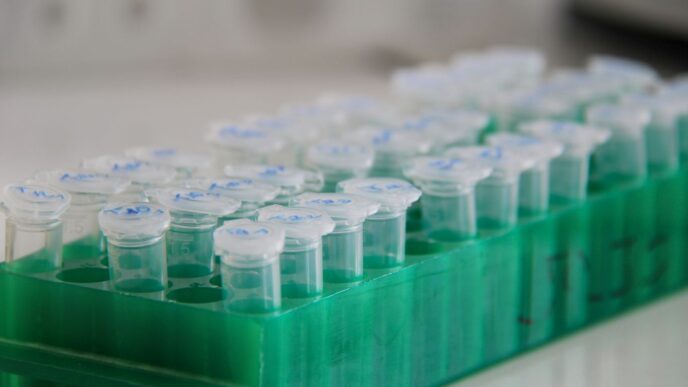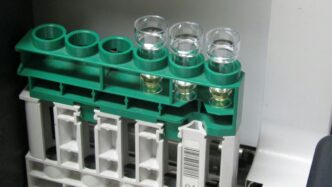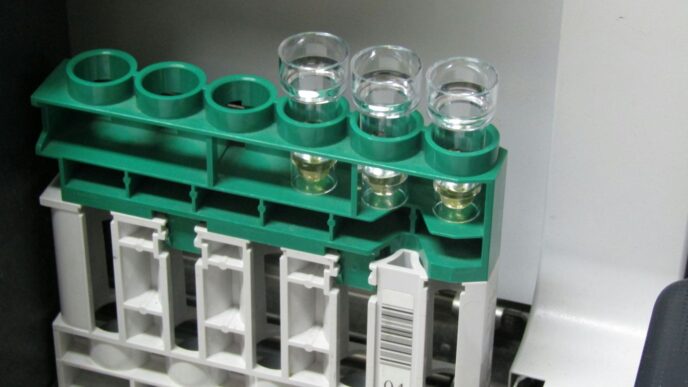If you’re planning your 2025 harvest, you might be wondering what makes Asgrow soybean such a popular choice. Farmers all over the country keep coming back to this brand, and it’s not just by chance. Asgrow soybean combines strong genetics, modern technology, and reliable performance. Whether you’re looking for better yields, cleaner fields, or just want a crop that stands up to tough weather, there are some real reasons to consider planting Asgrow for your next season. Let’s break down some of the top benefits you can expect from choosing Asgrow soybean.
Key Takeaways
- Asgrow soybean features exclusive genetics, giving you access to varieties you won’t find anywhere else.
- XtendFlex trait technology helps you manage tough weeds, making it easier to keep your fields clean.
- Seed treatments like Acceleron and ILEVO protect young plants from disease and early-season stress.
- Early planting with Asgrow soybean can lead to higher yields, even if plant populations are a bit lower.
- Consistent results across regions and strong contest performances show that Asgrow soybean delivers year after year.
Exclusive Genetics
If you’re a farmer who likes to keep things straightforward, here’s the deal: Asgrow soybeans are built with genetics you can’t get anywhere else. This isn’t just marketing fluff—these beans really do offer something different.
So, why should you care about those exclusive genetics? Let me break it down:
- Asgrow pours years of focused research into developing soybean varieties you can’t find in any other lineup. You get access to their own gene pool—nobody else can sell you these beans.
- These exclusive genetics mean the beans aren’t just random—each variety is tested for things like disease resistance, yield stability, and toughness against the specific pests and weather challenges most farms face.
- Some farmers I know switched after seeing their neighbor’s Asgrow field come out cleaner and with more bushels, year after year. That kind of repeat performance tends to stick with folks.
Want the numbers? Here’s a quick comparison of recent yield contest results, just to put things in perspective:
| Brand | Average Yield (bu/A) | Disease Resistance Ratings | Notable Trait |
|---|---|---|---|
| Asgrow XtendFlex | 71 | High | 2 bu/A above Enlist E3 |
| Enlist E3 (competitor) | 69 | Medium | Flexible herbicide options |
(Don’t forget: these numbers can swing based on location and weather, so always check for local results before deciding.)
Last tip: When you pick soybeans for next year, think about exclusive genetics as your secret weapon. These aren’t just any beans—they’re the beans that could help make your 2025 harvest a story worth telling at the coffee shop.
XtendFlex Trait Technology
XtendFlex Trait Technology is basically a game-changer for anyone dealing with stubborn weeds in their soybean fields. With this system, you get three-way herbicide tolerance: glyphosate, dicamba, and glufosinate. That means it’s got more flexibility built right in compared to older trait stacks. If you’re tired of watching weeds push through your post-emerge spray, this technology really stands out.
Here’s why a lot of folks in the Midwest have switched over for the 2025 season:
- More spray options: The three herbicide-tolerance trait lets you rotate your herbicides throughout the season and hit different weeds where they’re weakest.
- Reduced risk of resistance: Mixing modes of action makes it harder for weeds to develop resistance, which has become a real problem with single mode-of-action systems.
- Application flexibility: With XtendFlex, you can adjust your spray timing and program to best fit weather patterns, which was a lifesaver for a lot of growers during last season’s unpredictable spring.
Let’s break it down in a simple table:
| Technology | Herbicide Tolerance | Main Benefit |
|---|---|---|
| Roundup Ready 2 Xtend | Glyphosate, Dicamba | Improved weed control, less drift |
| XtendFlex | Glyphosate, Dicamba, Glufosinate | Flexibility, more effective management |
Bottom line, having more options makes managing your soybeans a little less stressful and, honestly, helps you get more sleep at night. There’s something to be said for knowing you’ve got a plan—even if the weather throws you a few curveballs.
Acceleron Seed Applied Solutions

Acceleron Seed Applied Solutions isn’t just a fancy name—it’s a combo of treatments that help give your Asgrow soybeans a smoother start right out of the bag. What stands out is how it protects your seed from multiple threats, long before you even see a sprout. Here’s what most folks don’t notice right away:
- Helps shield soybeans against major early-season diseases and key insect pests, which can really wipe out a young stand if you’re not careful.
- Promotes stronger root growth and better emergence, so you see more even and healthy plants popping up, even if your planting conditions weren’t perfect.
- Takes some of the guesswork out of those unpredictable spring weeks when you’re not always sure what the weather (or the soil) is going to throw at you.
Let’s look at the main components usually packed into Acceleron:
| Component | Role |
|---|---|
| Fungicide | Guards against soil-borne and seedling diseases |
| Insecticide | Fends off early pest attacks |
| Biologicals | Boosts germination and early vigor |
If you’re planting early, or the field had a rough year last season, it’s honestly a bit of peace of mind. Farmers swapping stories at the elevator will tell you it’s one less thing to wonder about when seed goes in the dirt. All in all, Acceleron makes sure you’re not starting at a disadvantage, and gives your beans a decent shot at thriving from day one.
ILEVO Seed Treatment
ILEVO® seed treatment is one of those things you don’t know you need, until you try it. It provides a layer of protection right from the start against sudden death syndrome (SDS) and soybean cyst nematode (SCN), two of the nastiest threats to your soybean crop. A lot of folks have had their fields hammered by SDS, especially if spring is wet, and ILEVO gives you a fighting chance before the problems even show up.
Here are a few of the main ways ILEVO helps your soybeans:
- Shields young seedlings from SDS, so you don’t see those yellow, dying spots later in the season that spell disaster for yield.
- Helps manage nematode populations, which can be almost invisible until your yields start dropping and you have no clue why.
- Works together with other seed treatments (like Acceleron) to give broad-spectrum early disease protection.
From what I’ve seen, farmers who’ve used ILEVO mention their stands look more even and healthy, even in fields with a known history of SDS. It’s not a total silver bullet, sure, but it buys peace of mind because your investment is protected as soon as the seeds go in the ground. For anyone planting early or in high-risk spots, ILEVO is almost a no-brainer.
Here’s a quick table just to put things in perspective:
| Problem Controlled | Effectiveness (When Used Properly) |
|---|---|
| Sudden Death Syndrome | High |
| Soybean Cyst Nematode | Moderate to High |
| Other Soil Diseases | Low to Moderate |
Every season is a roll of the dice, but using ILEVO makes it feel like the odds are at least a little more in your favor come harvest time.
Early Planting Advantage
Planting Asgrow soybeans early comes with some pretty strong advantages you shouldn’t skip over. Getting these seeds in the ground sooner means there’s more time before flowering, and that directly boosts your yield potential. It’s simple: more time above ground before the plants hit the reproductive phase, more nodes form, and that’s where the extra pods and beans grow.
Here’s a quick breakdown of what makes early planting worth your while:
- Early soybeans spend longer in the vegetative stage, stacking on more nodes (which usually translate to extra pods)
- A longer time before flowering means the plants use spring moisture and sunlight more efficiently
- Even with reduced stand sometimes (like if a cold snap hits after planting), early seeds tend to out-yield those planted late
- There’s actually less variation in yield across early-planted fields compared to beans sown later in the spring
According to research in recent planting date trials, highest yields consistently showed up in fields planted by early May, and those numbers started sliding after mid-May.
| Planting Window | Avg. Yield Potential (%) |
|---|---|
| Before May 10 | 100 |
| May 10 – May 20 | 95 |
| After May 20 | 88 |
Early planting isn’t just about chasing bigger numbers. It also spreads out the workload in spring and lets you use your inputs more efficiently. If you’re thinking about tweaking your planting calendar for 2025, the data’s pretty clear—your fields, and maybe your wallet, could be better off.
Higher Yield Potential
If you’re looking for more bushels per acre, Asgrow soybeans are developed with higher yield potential firmly in mind. All those years of research have gone into building varieties that make the most out of each growing season. Here’s why you see more in the hopper with Asgrow:
- Exclusive genetics in Asgrow beans mean they’re bred to push yield ceilings, not just fill your bin with average results.
- Plant breeders focus on bigger, healthier plants with more nodes per plant. The more nodes, the more pod sites, which usually means greater yield.
- Early planting is supported by Asgrow’s seed treatments (like Acceleron and ILEVO), giving beans the best chance at maximizing their season—more days growing means more opportunity for yield.
Let’s look at a quick comparison based on recent trial data:
| Brand | Average Yield (bu/acre) | Notable Trait |
|---|---|---|
| Asgrow XtendFlex® | 65 | Consistent high yields across regions |
| Enlist E3® | 63 | Strong weed control |
| Other Leading Varieties | 60 | Varies by location |
Growers in several big soybean states have seen Asgrow beans perform better year after year—sometimes outpacing competitors by 2 bushels or more per acre. A few reasons for this bump:
- Nodes-per-plant: More growing time means plants develop more nodes before flowering begins.
- Seed treatments: Early protection means stronger plants (think less disease hitting young beans).
- Regional testing: These beans aren’t just strong in the lab—they’re proven in local fields, so you know what to expect regardless of your zip code.
Bottom line: If hitting higher yields is a priority for your 2025 harvest, having Asgrow soybeans in the ground just makes sense.
Superior Weed Control
Keeping soybean fields free from stubborn weeds is honestly a struggle most growers deal with every year. With Asgrow Soybeans, weed control is just a bit simpler and more predictable. Their trait stack, especially XtendFlex, opens up a wider range of herbicide options than you might be used to if you’ve planted older varieties. That means you can go after weeds that have managed to slip past standard programs in other crops.
Here’s why Asgrow can give you a weed edge:
- Flexibility: With more approved herbicide modes of action, you can better target both broadleaf and grassy weeds, even those that have gotten resistant to basic products.
- Simpler spraying: Extended application windows make it easier to hit the right timing without stressing about drift onto your neighbor’s field. In my experience, that’s a huge bonus for peace of mind.
- Less weed seed bank: A clean field this season means fewer weed problems down the line—what you tackle today can make weed pressure lighter next year, even in your corn.
Here’s a quick look at what growers have reported using Asgrow with XtendFlex traits compared to platforms without advanced weed control:
| Weed Pressure | Asgrow XtendFlex (avg) | Standard Soybean (avg) |
|---|---|---|
| Post Spray Weeds per 100 sq. ft. | 2 | 8 |
| Volunteer Corn Control (%) | 97% | 74% |
| Broadleaf Weed Escape (%) | 3% | 15% |
Tackling tough grasses and broadleaf weeds in one go not only makes your canopy cleaner but helps yields inch up, too. Spraying isn’t as stressful, and you spend a little less time worrying about cleaning up messes later. It’s become sort of a quiet game-changer in how midwestern farmers approach clean fields. If you’re looking for one area to upgrade your toolkit, this might be it.
Proven Yield Contest Performance
It’s one thing to plant soybeans and hope for a good haul—it’s another thing when your seed consistently racks up real wins at national yield contests. Year after year, Asgrow soybeans make their way to the top of yield leaderboards, earning bragging rights and giving other beans a run for their money. Farmers are seeing their names on winner lists thanks to strong genetics and dependable performance from Asgrow.
Here’s why that matters for your own fields:
- Real-world proof: Contest wins aren’t just about ideal conditions. They show how Asgrow performs under actual farm management, with all the ups and downs that come with the job.
- Competitive edge: Contest results keep pushing innovation—each year’s winners are breaking records, so the genetics keep improving.
- Trust the data: When you peek at yield contest stats, you can see variety-by-variety performance down to the local level, not just company claims.
To put it in numbers, check out how Asgrow compares in recent contests:
| Year | National Yield Contest Avg (Bu/A) | Top Asgrow Winner (Bu/A) | Avg. Local Yield (Bu/A) |
|---|---|---|---|
| 2022 | 88 | 108 | 74 |
| 2023 | 90 | 112 | 77 |
These results aren’t just a pat on the back—they show real potential for your next harvest. If you’re tired of settling for “good enough,” maybe it’s time to see what all the fuss is about with Asgrow soybean seeds.
Drought Tolerance
Drought is one of those things you just can’t predict. Sometimes you get plenty of rain, sometimes it feels like it hasn’t rained in months. When June rolls around and your fields look more like a desert than a farm, you want to know your soybeans can handle it. That’s one thing I really noticed about Asgrow soybeans: they don’t give up easy when it gets dry.
The drought tolerance in Asgrow varieties comes from years of breeding for plants that keep going strong even when moisture gets scarce. These soybeans have a knack for setting pods and filling out beans, even when the weather tries to ruin the party. You don’t always see that with older or generic soybean lines.
Here’s why that matters:
- Improved root systems let plants pull water from deeper in the soil, so they’re not wilting the moment the top few inches dry out.
- Steadier yields, even in dry years, help you avoid those harvest-time disappointments when the combine starts rolling.
- Plants stay greener longer, which helps with pod fill during those crucial late-summer weeks when every drop of moisture counts.
It’s not just talk, either. Neighbors and local yield reports show that Asgrow soybeans often out-yield others during drought years, or at least don’t take as much of a hit. You’ll see a difference in pod count and bean size compared to less-tolerant beans when moisture comes up short. If you’re worried about what the sky’s going to do next summer, having beans that “hang tough” through that stretch is seriously reassuring.
Consistent Regional Results

One of the biggest reasons farmers stick with Asgrow soybeans year after year is their steady performance across different regions. Whether you’re in the Midwest or down south, there’s a track record of solid, repeatable results from these beans. It’s not just about getting lucky one season—farmers see similar yields and field health even when the weather throws curveballs.
Here are a few reasons why Asgrow is trusted for reliable results from region to region:
- Tailored genetics: Different Asgrow varieties are bred with local conditions in mind, so your beans are suited for your area’s weather, pests, and soil type.
- Real-world trial data: Each season, Asgrow shares local trial results with farmers. You can look up how specific varieties performed on neighboring farms—no guessing involved. For insight into how modern farms use this, see common pitfalls organizations avoid.
- Adaptation to local management: Whether you use no-till, conventional, or something in between, Asgrow soybeans consistently slot into your management style without missing a beat.
Farmers can also compare average yields on different varieties. Here’s a quick look at estimated yields (keep in mind, these are typical but can swing due to weather and management):
| Asgrow Variety | Estimated Yield (bu/acre) | Drought Tolerance | Weed Resistance (1-5) |
|---|---|---|---|
| AG29X9 | 60-70 | Medium | 5 |
| AG31X6 | 62-75 | High | 4 |
| AG33X8 | 65-78 | Medium | 5 |
If you’re trying to reduce risk and want beans that stand up to crazy spring and dry late summer alike, reliable regional performance makes all the difference. And every season, more info is released right down to the zip code, so you’re not flying blind. It’s kind of like having a neighbor who’s already trialed everything on your soil type and weather pattern. In short: with Asgrow, you get predictability, and that’s worth a lot when you need to plan for the unexpected.
Conclusion
So, after looking at all the facts, it’s pretty clear why so many farmers are choosing Asgrow soybeans for their 2025 harvest. The numbers don’t lie—these beans have a track record of strong yields and solid performance, even when the weather throws a curveball. Plus, with exclusive genetics and weed control options, you get a crop that’s easier to manage from planting to harvest. I’ve heard from folks down the road who swear by the local yield results, and honestly, it’s hard to argue with their success. If you’re aiming for a reliable return and want to keep your fields in good shape, Asgrow seems like a smart bet. Give it a try next season and see how it stacks up on your own acres.
Frequently Asked Questions
What makes Asgrow soybeans different from other brands?
Asgrow soybeans use special genetics that are only available from them. This means the seeds are bred to give you better results in your fields, like stronger plants and higher yields.
How does the XtendFlex trait help my crop?
The XtendFlex trait lets you use more types of weed killers safely. This means you can control tough weeds in your soybean fields and keep your plants healthy.
Why should I use Acceleron Seed Applied Solutions?
Acceleron treatments protect your soybean seeds from diseases and bugs as soon as they are planted. This helps your seeds grow better and gives your crop a good start.
What is the benefit of ILEVO seed treatment?
ILEVO treatment helps protect your soybeans from a disease called Sudden Death Syndrome and also from some bugs in the soil. This keeps your plants healthier throughout the season.
Is it better to plant soybeans earlier in the year?
Yes, planting soybeans earlier can help the plants grow more leaves and branches, which can lead to more beans at harvest. Just make sure the soil is warm enough and not too wet.
How do Asgrow soybeans handle dry weather?
Asgrow soybeans are bred to be tough during dry spells. They keep growing and making beans even when there isn’t much rain, so you’re less likely to lose your crop during a drought.

